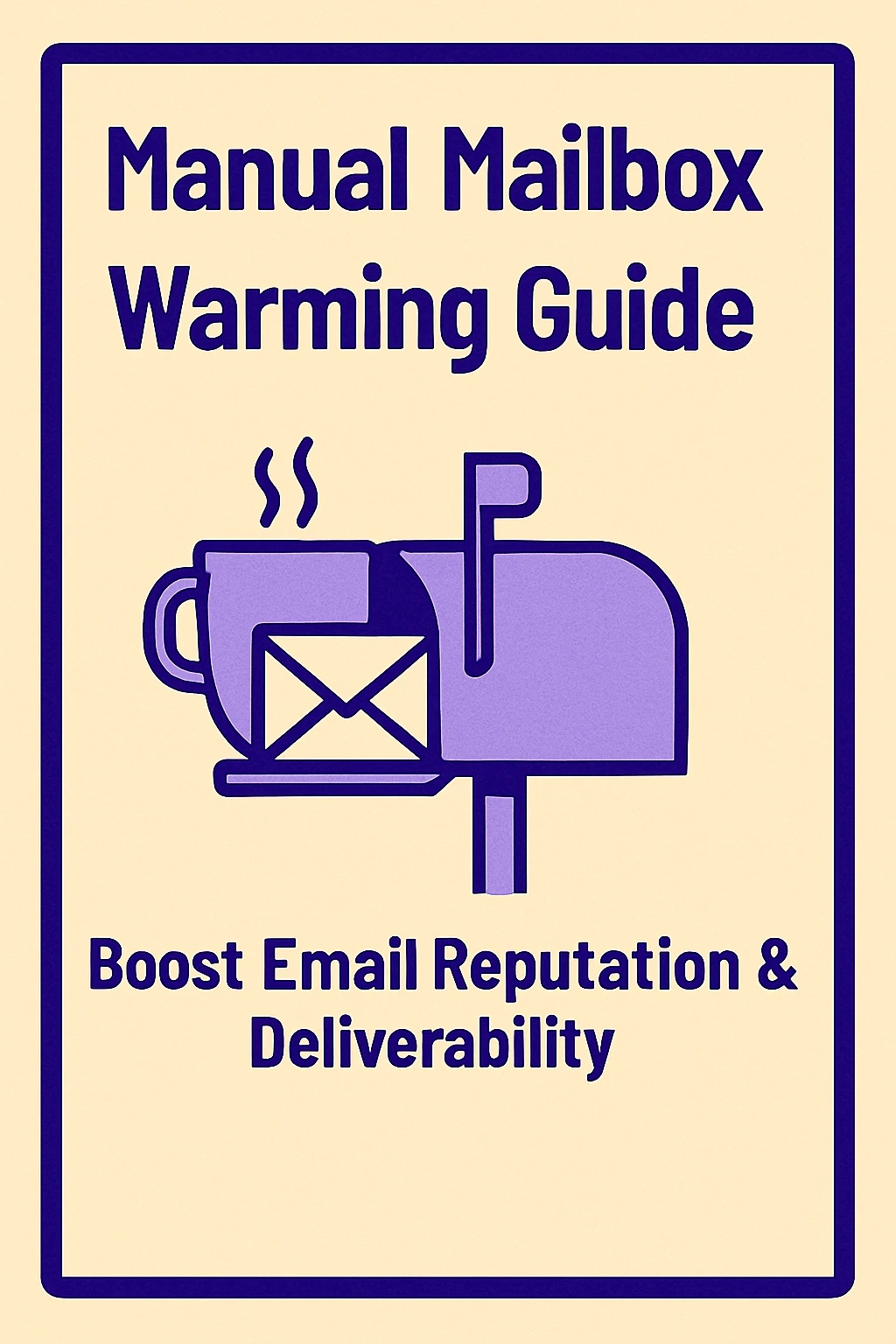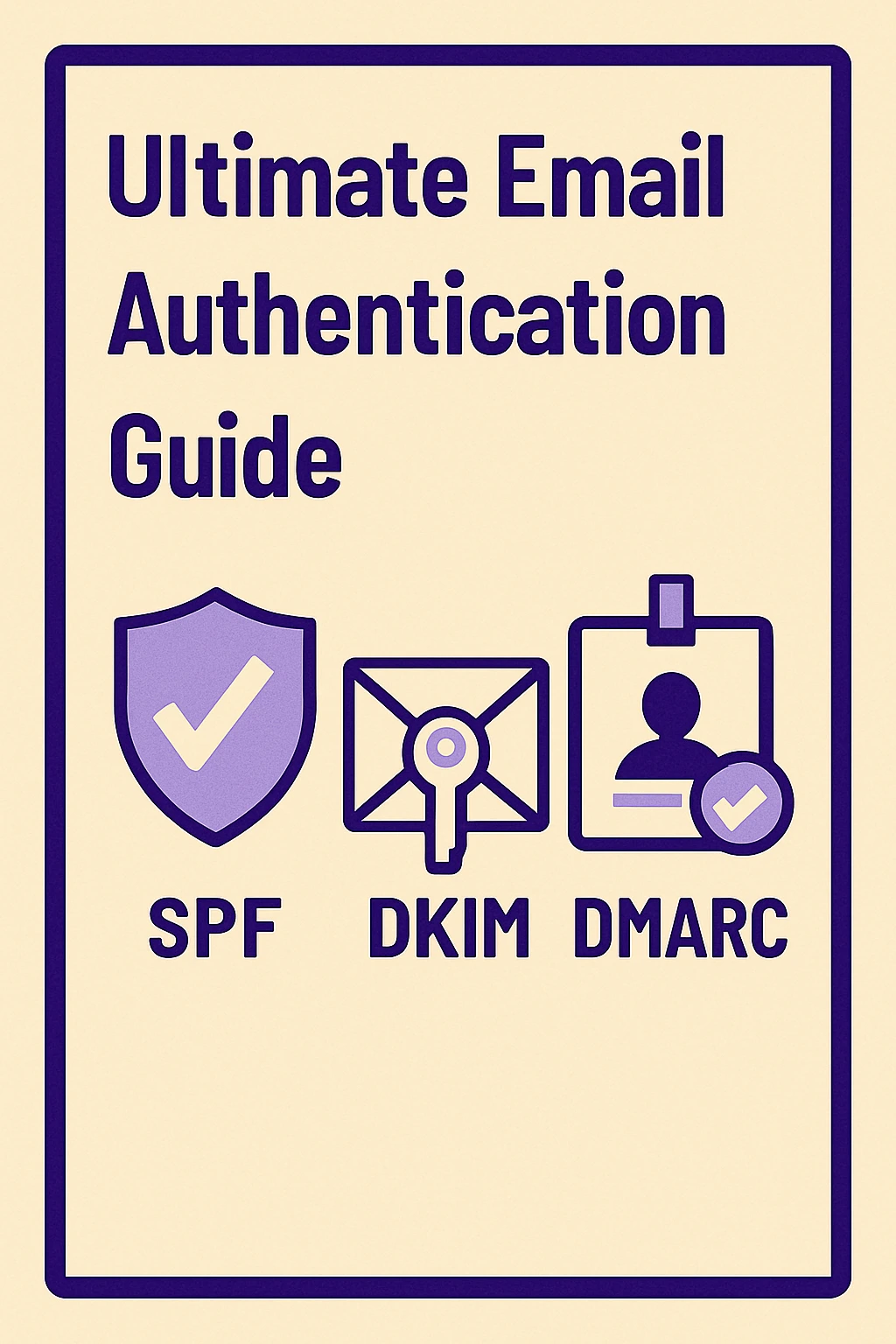Building Domain Reputation in 2025: Proven Power Tips
In 2025, maintaining a strong domain reputation is essential for any business using email as a primary communication tool. A strong domain reputation ensures your emails land in the inbox, not the spam folder, which is critical for driving engagement and trust with your audience. This is particularly important for activities like cold outreach, newsletters, and customer support emails. Email providers like Gmail and Outlook use domain reputation as a key factor in determining whether your messages are legitimate or spam. Therefore, keeping your domain's reputation in top shape is crucial for improving deliverability, enhancing open rates, and boosting overall email campaign performance. Building and maintaining a solid domain reputation involves several strategies, including slowly warming up your domain, using email authentication protocols like SPF, DKIM, and DMARC, and ensuring regular list hygiene by removing inactive or invalid email addresses. By monitoring key metrics such as bounce rates, engagement levels, and spam complaints, you can catch potential issues early and take action before they negatively impact your email deliverability. Utilizing tools that help track and manage your domain's reputation is also a smart move, providing valuable insights and alerts that prevent reputation damage. Consistency, security, and best practices are key to ensuring your emails reach their destination and build long-term trust with your recipients.

If your business relies on email marketing or communication in 2025, your domain reputation is a key factor in your success. A solid domain reputation ensures your emails land in inboxes, while a poor one can see even the best-crafted emails end up in spam.
Whether you’re doing cold outreach, sending newsletters, or managing customer service emails, safeguarding your domain’s trust level is crucial.
In this guide, we’ll explore what domain reputation is, why it’s so important in 2025, and actionable steps you can take to build and protect it.
What Is Domain Reputation and Why Does It Matter?
Domain reputation refers to how email service providers (like Gmail or Outlook) view your domain name, like yourcompany.com. This reputation directly influences whether your emails will be delivered to the inbox or routed to spam.
In 2025, domain reputation will become more important than ever for email providers in their fight against spam and phishing attacks. A strong domain reputation signals that your emails are legitimate and worth reading, while a weak reputation increases the risk of bounces, ignored messages, or even total non-delivery.
Why Domain Reputation is Crucial for Cold Email Campaigns

Cold emailing is an effective strategy for reaching new prospects, clients, or business partners. However, email providers scrutinize cold emails more than any other type because they involve sending messages to individuals who don’t know you.
Even if your cold email is highly relevant and well-written, a poor domain reputation can send it straight to spam. Building and maintaining a good domain reputation is essential for successful cold outreach, both in terms of deliverability and response rates.
Domain vs. IP Reputation: What’s the Difference?
Both domain reputation and IP address reputation impact email deliverability:
- Domain Reputation is tied to your website’s domain (like yourcompany.com).
- IP Reputation refers to the reputation of the email-sending server’s IP address.
In 2025, domain reputation plays a more significant role because many businesses use shared IP addresses through services like Mailgun and SendGrid. Even if you share an IP with others, your domain’s behavior determines your reputation.
Factors That Harm Your Domain Reputation
1. Low Engagement Rates
When recipients ignore your emails, it signals to email providers that your content is irrelevant, harming your domain’s reputation.
2. High Bounce Rates
Emails that bounce because the recipient’s address is invalid can damage your reputation and reduce deliverability.
3. Spam Complaints
Even a small number of spam complaints can significantly affect your domain’s reputation, increasing the likelihood of your emails being marked as spam.
4. Poor List Hygiene
Using outdated or purchased email lists raises the risk of hitting spam traps or invalid addresses, which damages your reputation.
5. Lack of Email Authentication
Without email authentication protocols like SPF, DKIM, and DMARC, email providers can’t verify that your emails are legitimate, which can result in your emails being flagged.
How to Build a Solid Domain Reputation
Start Slowly
When you begin sending emails from a new domain, start with smaller batches and gradually increase your email volume. This helps email providers recognize your domain as trustworthy over time.
Use a Subdomain for Outreach
For cold outreach, consider using a subdomain, like sales.yourcompany.com. This way, if any issues arise, your primary domain remains protected.
Implement SPF, DKIM, and DMARC
These protocols authenticate your emails, ensuring they’re legitimate and authorized. Setting them up is crucial for improving deliverability and security.
Warm Up Your Domain
Before you start large-scale outreach, gradually warm up your domain by sending emails in small volumes. Warm-up tools can help you mimic natural activity, helping build trust with email providers.
How to Maintain a Healthy Domain Reputation

Monitor Your Metrics
Keep an eye on open rates, bounce rates, click-through rates, and spam complaints. A sudden drop in engagement may indicate a problem with your domain’s reputation.
Regularly Clean Your Email List
Remove invalid, inactive, and disengaged email addresses to keep your list clean and avoid deliverability issues.
Avoid Sudden Volume Spikes
Don’t suddenly increase your email volume from hundreds to thousands per day. Gradual growth helps avoid suspicion from email providers.
Use a Reliable Email Infrastructure
Choose an email delivery provider that offers tools for monitoring domain reputation and ensures robust security and deliverability. The right infrastructure can make a huge difference.
Recommended Tools for Monitoring and Improving Domain Reputation
Here are some top tools in 2025 that can help you keep an eye on, maintain, and improve your domain reputation. These tools cater to different types of businesses and email needs.
Mailkarma.ai
Mailkarma.ai is a monitoring tool designed to help you track your domain’s health and avoid deliverability issues before they escalate.
Features:
- Real-time domain health reports
- Blacklist and spam monitoring
- Guidance for SPF, DKIM, and DMARC setup
- Automated email warm-up tools
Pros:
- Easy-to-use interface
- Great for cold outreach and transactional emails
- Alerts you about potential issues early
Cons:
- Some features are behind a paywall
- Setup may require technical knowledge.
Mailgun
Mailgun is an email delivery platform used by developers and large enterprises. It’s designed to authenticate and track high-volume email campaigns.
Features:
- High-volume email sending
- SPF, DKIM, and DMARC authentication support
- Analytics and deliverability insights
- IP reputation tracking
Pros:
- Ideal for technical teams
- Scales well for growing businesses
- Strong customer support
Cons:
- Not beginner-friendly
- Pricing may be expensive for small businesses.
SMTP2GO
SMTP2GO is an easy-to-use platform designed to ensure reliable email delivery with comprehensive monitoring and support.
Features:
- Real-time delivery tracking
- Bounce and spam report tracking.
- Email authentication setup
Pros:
- Beginner-friendly
- Excellent customer service
- Suited for businesses of all sizes
Cons:
- Lacks advanced automation features
- Pricing can be higher for light users.
Mailazy
Mailazy is ideal for developers needing an API-based email solution. It’s lightweight but secure, making it a great choice for developers.
Features:
- Developer-friendly email API
- Email authentication support
- Basic email performance tracking
Pros:
- Quick integration
- High email security
- Great for apps and systems
Cons:
- Limited visual reporting and dashboards
- Not suitable for marketers
LuxSci
LuxSci is a secure email service provider focused on industries with high compliance needs, such as healthcare and finance.
Features:
- HIPAA-compliant email services
- Customizable server settings
- Advanced domain protection
Pros:
- Excellent for privacy and compliance
- Strong technical support
- Ideal for regulated industries
Cons:
- Steep learning curve
- Not suited for general email marketing
MailerSend
MailerSend offers a user-friendly platform for sending transactional emails such as confirmations and alerts.
Features:
- Authentication for senders
- Simple API integration
- Basic email analytics
Pros:
- Affordable pricing
- Clean interface
- Ideal for small businesses
Cons:
- Not suitable for large-scale outreach
- Lacks complex automation tools
SendGrid by Twilio
SendGrid is one of the most scalable email platforms available and is trusted by both startups and large enterprises.
Features:
- Domain and IP monitoring
- Advanced analytics
- Strong API support
Pros:
- Scalable for growing businesses
- Great for developers
- Strong reputation monitoring tools
Cons:
- Takes time to learn
- Costs increase with volume.
Postmark
Postmark is known for fast, reliable email delivery, particularly for transactional emails like password resets and alerts.
Features:
- Fast email delivery speeds
- Inbox placement tracking
- Reliable API
Pros:
- High inbox delivery rates
- Quick setup process
- Very reliable service
Cons:
- Not ideal for marketing campaigns
- Limited analytics and automation tools
Conclusion: Protecting Your Domain Reputation
In 2025, your domain reputation is vital to your email marketing success. If you want your emails to land in inboxes and get the attention they deserve, it's crucial to maintain a clean and trusted domain.
Start by slowly building your domain reputation, monitor your metrics regularly, and use the right tools to protect it. With consistent efforts and reliable services like Mailkarma.ai, SMTP2GO, or SendGrid, you can ensure your emails always reach their destination.
FAQs
Q1: How can I check my domain reputation?
You can use tools like Mailkarma.ai to monitor blacklists, domain health, and sender scores.
Q2: What are SPF, DKIM, and DMARC?
These are email authentication protocols that verify your emails are legitimate and help improve deliverability by preventing spoofing.
Q3: What is an email warm-up tool?
It gradually increases your email sending volume to establish trust with email providers and prevent spam filters from blocking your messages.
Q4: How often should I clean my email list?
It’s best to clean your email list at least once a month to remove invalid or inactive email addresses, which can negatively affect your domain reputation.
Recent Blogs
FAQs: Everything You’re Wondering About Cold Email Deliverability & MailKarma’s Infrastructure
MailKarma is a dedicated email infrastructure solution built exclusively for cold email outreach. Unlike shared inbox tools or general ESPs, MailKarma gives you complete control over your sending setup—private US IPs, clean domains, and expert-backed deliverability practices. Built by cold email pros, MailKarma is optimized to scale outreach without landing in spam.
Because MailKarma sets up private infrastructure—including custom domains and mailboxes—it doesn’t offer a traditional free trial. However, you can explore the platform, view your dashboard, and test features before provisioning infrastructure. Our private dedicated email servers cost $150 per server plus $0.001 per email sent, making it extremely cost-effective for high-volume cold email campaigns. For Gmail Workspace solutions, pricing starts at $3.50 per email with a 10-email minimum, dropping to $2.50 per email for volumes over 100 emails. This transparent pricing model ensures you only pay for what you use while maintaining enterprise-grade email deliverability.
Yes. MailKarma automatically sets up SPF, DKIM, and DMARC records using best-in-class standards. No technical hassle—our system handles everything behind the scenes, and our support team is always ready to assist if needed.
Every MailKarma subscription includes:
- Automated DNS setup (SPF, DKIM, DMARC)
- Private mailbox hosting
- Ongoing deliverability optimization
- Server monitoring and uptime guarantees
It depends on your monthly sending volume and the number of contacts per sequence. To simplify this, MailKarma includes a volume-based calculator inside the app to help you choose the optimal setup for scale, safety, and inbox placement.
Gmail and Outlook aren't built for cold outreach—they throttle volume, rotate IPs, and limit deliverability. MailKarma gives you:
- Dedicated infrastructure
- Warmed IPs and aged domains
- No shared resources
- Built-in best practices for cold outreach
It's the infrastructure your outreach actually needs.

.png)



